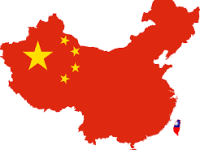Business
Europe snatches from the US the status of China's preferred trade partner
Europe and China meet
USPA NEWS -
The United States has lost its status as China's preferred trading partner. The Asian country is currently the main trading partner of the European Union. With the war in Ukraine, this circumstance acquires special importance. The West wants China to withdraw its support for Russia, relying on its weight in trade relations with the Asian country, which has become the main supplier of the EU and the third destination for European Community exports. This Friday, the EU and China met with that objective.
Besides being a strategic partner, China is also a very important competitor of the EU. In this sense, the EU wants to guarantee equal conditions in its relations with China through all the instruments and mechanisms available to defend its interests. There are currently more than 60 dialogues between the EU and China. Trade issues are addressed at the annual Trade and Investment Policy Dialogue meetings, at the High-Level Economic and Trade Dialogue, and at the annual EU-China Summits.
The High-Level Economic and Commercial Dialogue establishes a strategic communication channel on issues related to economic, commercial and investment cooperation, and covers a series of areas that affect the imbalance of the EU-China trade balance, such as market access, intellectual property rights, public procurement, the environment, high technology and energy.
China is negotiating its accession to the Plurilateral Agreement on Public Procurement of the WTO. The protection of intellectual property rights in the field of trade and, especially, their enforcement is another key element in trade relations with China. The EU maintains an EU-China Dialogue on intellectual property. The topics discussed focus on the necessary review of the Trademark Law, trade secrets, data protection, copyright and cooperation in new technologies for the protection of intellectual property rights.
The EU and China reached an agreement before the pandemic on the protection of geographical indications for wines, spirits and agricultural and food products. The agreement, which initially protected 100 European geographical indications in China and 100 Chinese geographical indications in the EU against imitations and name fraud, passed a legal review and the approval of the European Parliament and the Council. Among these 100 protected European geographical indications there are 12 Spanish: eight names of wines (Rioja, Cava, Catalonia, La Mancha, Valdepeñas, Jerez, Navarra and Valencia), two of oils (Priego de Córdoba and Sierra Mágina), one of cheeses ( Manchego cheese) and another of spirits (Brandy de Jerez).
In turn, the EU and China continue to negotiate an investment agreement: EU-China Comprehensive Agreement on Investment. These negotiations were launched on November 21, 2013 and their objective is to achieve better access to the Chinese market by EU companies, with legal certainty and the consolidation of Chinese investment legislation.
The US trade balance worsens
According to an analysis by The Baltic and International Maritime Council (BIMCO), in the first seven months of 2021 the US trade balance with China worsened compared to the same period in 2020, going from a deficit of 162.8 billion dollars to a deficit of 187.2 billion dollars. The first seven months of 2020 were severely affected by the pandemic, creating an artificially low deficit; so compared to 2019, the trade balance improved in the first seven months of this year, helped by higher value exports.
US exports by value to China increased 34.7% in the first seven months of 2021 compared to 2019, at $72.4 billion; this year's exports are 14.1% higher than the same period in 2017, before trade war tariffs were implemented. While total imports measured in value from China have also increased since 2019 (+4.0%), the total value of imports decreased 1.2% in the first seven months of this year compared to the same period in 2017, this being the year of the trade war.
In the first seven months of this year, US exports to China rose 40.6%, nearly double the rate of growth of exports, 22.2%, recorded in the same period to the rest of the world. The strongest growth came from energy products and agricultural goods. US exports of containerized goods have been hit by both a slow recovery in manufacturing and problems exporting the goods.
Among China's main trading partners, the Asian giant's exports to the European Union increased by 6.7% in 2020, to 390,978 million dollars, and imports grew by 2.3%, to 258,550 million dollars. In the case of the United States, China's exports increased by 7.9% in the same year, to 451,813 million dollars, while imports from the United States increased by 9.8%, to 134,907 million dollars, with a trade surplus of 316,906 million dollars.
Liability for this article lies with the author, who also holds the copyright. Editorial content from USPA may be quoted on other websites as long as the quote comprises no more than 5% of the entire text, is marked as such and the source is named (via hyperlink).






